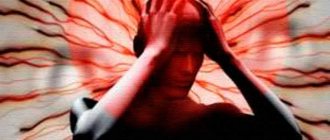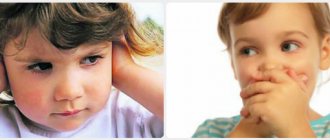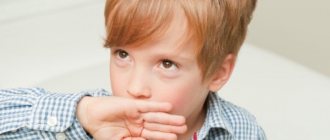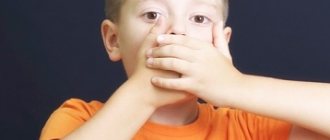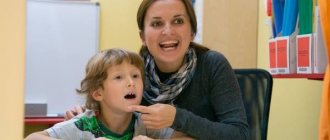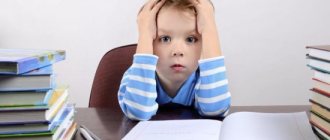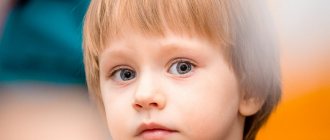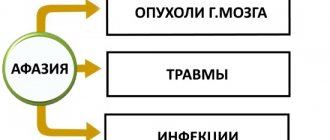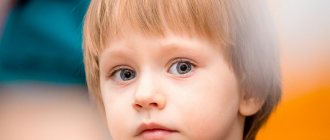The term "dyspraxia" comes from "dis" and "praxis", meaning "impairment" and "movement".
Praxis is a complex set of processes that are aimed at organizing a full-fledged motor act. This is an important mental function of people. It is formed during life, when people come into contact with the world. These processes allow you to automatically perform learned movements. Such as tying shoelaces, building a construction set, putting down a fork, writing a sentence - almost all these simple actions are inaccessible to someone whose praxis is impaired or not formed. However, such a person will not experience any restrictions in movements, he will not suffer from paralysis.
The term "praxis" comes from the Greek "pragma" - "action".
Causes of delays and developmental disorders
Due to the fact that some parts of the brain do not function sufficiently, problems arise in the area of praxis. Such delays in childhood appear for several reasons. The first is that natural brain damage occurred. This is not necessarily an injury; damage could also occur during pregnancy. Due to which the maturation of the left and right hemispheres of the brain was disrupted. The second reason is the lack of activity, which is needed at a certain time in the formation of the body for the full development of functions. For example, a child suffers a lot from somatic diseases in childhood. He constantly picks up various infections and gets fractures. This subsequently leads to high fever and joint pain. Because of this, he cannot move to the extent that the child needs for full development. In the future, he will develop unformed movements, which will lead to dyspraxia.
The arterial and manual spheres are at risk when praxis is impaired. This is due to the location and joint activity of the motor areas of the brain, which are responsible for the implementation of difficult movements. They are located next to each other and are responsible for working together.
In the case when a child is diagnosed with “manual dyspraxia,” then with a high probability we can say that he will have enormous difficulties with speech and the formation of thinking. In the future, this disease can develop and develop into dyslexia or dysgraphia. This means that the child will have difficulties with the formation and development of all types of activities. He will not be able to build a plan for his further movements and actions. It will be difficult for him to switch from object to object. The child will not be able to carry out the “motor program” of an ordinary person.
Articulatory dyspraxia
Verbal (or articulatory) dyspraxia is a speech disorder, namely a violation of the pronunciation aspect of speech, which is associated with underdevelopment or incorrect formation of articulatory praxis. With such dyspraxia, the mobility and tone of the muscles and their contractile abilities are preserved.
Typically, this pathology is included by outdated sources in the range of speech therapy disorders - dysarthria.
The main differences between articulatory dyspraxia and dysarthria:
- if a word is familiar or automated, then it is likely to be pronounced correctly; but the same sounds in other words may be pronounced incorrectly (that is, the problem is not in the pronunciation of the sound as such, but in the formation of the pronunciation skill);
- the child independently searches for an articulatory position;
- the number of errors largely depends on the surrounding situation and the emotional state of the child (when repeating after a familiar adult in a calm state, the pronunciation will be correct; in a frightened or nervous state, errors are likely).
The main difficulties in verbal dyspraxia: distortion of sounds (their omission or replacement with others, rearrangement of syllables, etc.) and difficulties in constructing sentences.
Classification
Dyspraxia is classified according to which part of the brain is not yet fully developed, from motor disorders when examined by a neuropsychologist.
Classification:
- Efferent or kinetic (pre-motor area of the left hemisphere of the brain - this is for right-handers) - difficulties during the performance of sequential actions. This is expressed in difficulty when rearranging elements or when moving within a motor program, so to speak, “getting stuck” on some elements of this program;
- Afferent or kinesthetic (In right-handed people - the parietal cortex in the left hemisphere) - problems arise when selecting specific poses. Manifests itself in areas such as manual, articulatory;
- If you have difficulty orienting your body in space. A person cannot accurately reproduce a pose in space. Simple concepts (left and right), (up and down) are not formed - spatial dyspraxia (these problems appear in such an area of the brain as the parieto-occipital);
- If a person has problems while playing with puzzles or while drawing, when it is necessary to take into account the position of objects in space, then he has problems of a constructive nature - constructive dyspraxia;
- Regulatory - a person lacks voluntary coordination over his own actions. Non-system errors appear in many areas of praxis.
Article:
Translated from Greek “dys” means violation, “praxis” means activity. The child's inability to make consistent, purposeful movements. Articulatory dyspraxia is the inability to make consistent movements with the tongue, lips, mouth, and the inability to switch from one articulatory posture to another. Recently, there are more and more dyspraxic children. The reason for this is the defective development of neurons in the cerebral cortex. Children cannot pronounce simple words “Ta-nya”, “Va-nya”, “Ka-tya” due to the inability to raise the tongue on the second syllable and make a series of tongue movements. Therefore, the sound pronunciation and syllable structure of the word are impaired. This violation can be corrected. The main thing is to maintain consistency in correctional work, smoothly moving from one stage to another. Correction of dyspraxia can last for more than one year with systematic sessions with a speech therapist. Types of dyspraxia There are two types of dyspraxia - afferent (kinesthetic) and efferent (kinetic). Afferent - the child’s inability to pronounce individual isolated sounds without switching - taking a certain position with the mouth. These are completely non-speaking children who cannot pronounce even individual sounds, with the exception of a few vowels. This form is more complex and requires a lot of work. Efferent dyspraxia is the inability of a child to switch his mouth from sound to sound. The tongue and lips work poorly. Such a child can pronounce individual syllables, mainly stressed ones, but will have difficulty saying the simple word “Ma-nya.” He confuses, swallows syllables, speaks his own language, has porridge in his mouth - all this is a violation of the syllabic structure of the word. These two forms of dyspraxia cannot exist together. Three types of praxis Before starting correctional work, it is important to know that there are three types of praxis: gross motor skills, fine motor skills, articulatory motor skills. The development of a child always begins with the body. Gross motor skills – somatognosis, the ability to move the body. Before you teach him to speak, you need to teach him to take a particular pose. The child must jump, run away, crawl away, turn around, only then will he learn to speak. In our computer age, children often do not fully experience this stage of their own development. They have not learned to control their own body and immediately switch to using their tongue. What kind of articulatory gymnastics does he need if “physics” suffers? The child comes to learn to speak, but does not know how to throw a ball, jump on two legs, and does not control his own body. We must understand that parts of the brain develop in stages. Next, we develop fine motor skills of the hands. This includes visual-spatial coordination: eye-hand. Will the baby be able to correctly insert objects into a narrow or round hole with his fingers, lay out a square of counting sticks according to a pattern, sort out the beans, thread a string into the hole. If he doesn’t know how, we teach him. Articulatory praxis is the ability to switch the tongue from one position to another. Every speech sound has some form of articulation. When about to pronounce the word “cat”, our mouth is already prepared in advance to extend and round the lips for the sound [o] after playing [k]. These movements are very fast, barely noticeable, but the articulation organs must be prepared and trained for them. Articulation and clarity of pronunciation of sounds is called coarticulation. Stages of dyspraxia correction In correctional work, it is important to follow all stages and not jump to the next one until the previous one has been completed. If the syllable structure of a word is broken, there is no need to start working on sound pronunciation. You can combine work on three types of praxis. For example, when developing general motor skills, you can involve working with your fingers and pronouncing those syllables that are accessible to the child. Gross motor skills In work, everything starts with the body. If a child has poor control of his body and fingers, there is no point in moving on to the formation of articulatory praxis. At the very beginning, we teach the child to use his senses. To do this, we let him smell, touch objects, cereals, sand, plasticine, listen to sounds (like pouring water, rustling paper, ringing a bell, knocking spoons, a drum, etc.). Sensory integration is needed to improve somatognosis. This concept includes the child’s ability to move and control his own body. By the age of 4, a child should be able to jump on two legs without problems, pushing off at the same time, jump over a rope with both legs, stand on one leg, catch and throw a ball, and walk up the stairs in alternating steps. If he doesn’t know how to do this, then we begin to develop general motor skills using simple exercises as an example: repeat after me - cross your arms, clap your hands above your head, behind your back, in front of you, tap on your shoulders, on your knees. Cannot repeat body posture, cannot repeat sounds and syllables. To help your child learn to feel his body, you can touch his nose, cheek, lips and other parts of the body. With his eyes closed, he must show which part was touched. Often awkward children have disrupted behavior because they do not feel their body. Next we work on switching from one body pose to another. They clapped, stomped, and tapped their knees. The child must be able to perform movements sequentially, not simultaneously, but each separately. You can come up with other poses: hands on the waist, up, down, etc. Any word consists of a certain sequence, so before you learn to reproduce the syllables in a word, you need to learn how to perform a series of sequential body movements. When a child learns to control his body, he must learn to determine the distance to an object relative to himself. For example, we insert a thread into a toy needle, throw the ball up, high, low, far, close, towards ourselves, away from ourselves, to the left, to the right. We carry out the commands: step forward, backward, right, left, give the object behind you, in front of you, place the toy to your right. Then we learn to arrange objects relative to each other. The mouse is in front of the cat, to the right of the doll, behind the dog, etc. We learn to determine the location of one object relative to another (where?). With the development of spatio-temporal relations at this stage, this includes motor planning - determining the sequence of not only objects relative to each other, but also the sequence of actions. What first and what then. To do this, we teach you how to follow simple commands: first put the blue pebble in the box, and then the red one. The child must first listen to the instructions and only then follow them. Pebbles can be replaced with any objects: toys, balls, spoons, forks. Even while dressing, you can give the following instructions: put on your jacket first, and then your hat. We gradually complicate the instructions to three steps. When performing these actions, neural connections in the cerebral cortex begin to change. In parallel with the development of general motor skills, the development of phonemic hearing and pronunciation of syllables can be connected. To do this, the child must lay out a rhythmic series, perhaps from pebbles, multi-colored cubes, buttons, pencils: red, yellow, red - continue the series. If the sequence is followed correctly, press the index finger on the pebble. For example, red is the syllable “ta”, yellow is “nya”. “Ta-nya, ta-nya, ta-nya, ta-nya,” etc. You can take other syllables: “ma-me”, “va-ta”. Fine motor skills We learn to feel the fingers, master the tweezer grip (grasp with the index and thumb). To do this, we connect clothespins, beans, beans, coffee beans and other small items (sorting, rearranging). When the child masters the tweezer grip, then he will begin to use the organs of articulation. Such a grip should be formed by 1.5-2 years. We connect visual-rhythmic rows (laying out pebbles). Simple sequence: one-one; complicate it - two-one; one two; then one-one-one. We develop an understanding that each element depends on the other, just like the syllables in a word and the articulation of each sound. The development of fine motor skills of the hands is also necessary for any child in order to start writing in the 1st grade. If your fingers are weak, your writing will be slow and clumsy. We develop our fingers through simple exercises: we crumple paper with our palm, throw a ball, throw darts, tear paper into small pieces, roll sausages from plasticine or dough (not with our palm, but with the phalanges of our fingers). Press the plasticine with your index finger, squeeze out the toothpaste and turtle head from the sensory toy. Learning to hold a pencil: coloring, tracing, shading, writing hooks, sticks. Working on hand switchability is so that the child can dynamically change the position of his fingers. Finger gymnastics and exercises such as “Finger-fist” are well suited for this. We use the same pebbles (rhythmic rows): press one pebble with your index finger, press the other with your fist. Finger-fist-finger-fist-finger-fist. Learn to change postures with your palms: fist-edge-palm. At the same time, we teach the child simple rhythms: tap your palms alternately on the table, on the drum, 2 times on the table, once on the drum, loudly, quietly, highlighting the stressed syllable. It is also important to develop visual-spatial coordination: eye-hand. Hit the ball into the basket, insert the object into the desired hole, lay out a picture of matches, counting sticks, continue the row on a sheet of paper in the cells, graphic dictation. Next, as part of the development of temporal-spatial relations, we move on to working on a plane (sheet of paper). Draw a circle to the right of the square, a triangle below the circle, etc. Such orientation is important not only in terms of the development of oral speech, but also the development of writing. Since we begin to write letters from the beginning of the line, in a certain sequence in the word, without going beyond the boundaries of the line. Articulatory motor skills Only after sufficient development of general and fine motor skills do we move on to articulation. There are static and dynamic tongue movements. We are interested in dynamic gymnastics, we ask the child to change the positions “Tube” - “Fence”, “Clock” - “Swing”. When the child learns to switch organs of articulation, we move on to the last stage - working on speech. If a child speaks only vowels with the afferent form of dyspraxia, then we will teach him to switch from one to another: “i-u”, “i-a”. Only then do we move on to syllables with consonants. First we take the same ones - “ma-ma”, then different open syllables - “ma-nya”, then closed syllables - “am-am”, “at-am”, “at-um” and, finally, with a combination of consonants: “ kwa-kwa”, “kwa-kwu”, “bda-bdu”, “mna-mnu”. Only in this order. When forming switchability, we take the visual series: “ta-nya-ta-nya” (“Mi-sha, ki-sa, dy-nya”). We play games: look for “mi-shu”, “ki-vi”, “dy-nu” in a magic bag. Wash in the bath, what are you doing? "My pussy, my melon." You can hide pictures under the rug. There are 14 classes of development of the syllabic structure of a word (according to A.K. Markova). 1st grade - words of two open syllables (mom, dad, melon, magnifying glass, kiwi) - the simplest words. We start working on syllable structure from 1st grade. Grade 2 – three open syllables (coin, macaque). Grade 3 – one closed syllable (beetle, bitch). And so on with the complication of the syllable structure by class. Grade 14 – four open syllables (turtle, piano). You need to go clearly by class; there is no point in jumping several classes higher. Do not ask your child to say the word “turtle” if he cannot say “Vanya”. When working on the formation of the syllabic structure of a word, you can use dynamic praxis: the child jumps on the mat, says “dy,” squats down and says “nya.” And then jump and squat. We also make sure to form a speech exhalation. We blow on candles and cotton wool. With a good exhalation, switchability with your mouth will be better. Compliance with the sequence of syllables depends on the volume of auditory-verbal memory. Therefore, it is necessary to develop the child’s ability to hear and remember instructions. Let's play again: give the bear a car, the doll a ball, and the mouse some candy. Place the tomato in the red pan and the apple in the yellow one, with the red ball to the left of the blue one. The child must listen, organize the information in his head into sections (motor planning) and perform it correctly. He will also speak according to plan. In game tasks, you need to speak syllables and words with your child as many times as possible. Only repeated utterance can form speech. You need to say one word 10-30 times to reinforce it. In the pronunciation process, it is important to follow the following steps: first we pronounce syllables or words conjugately (together with the baby), then reflectedly (one person speaks), then independent speech. Until one class of the syllabic structure of a word is fixed, we do not move on to the next. You also need to use verbs in your speech. We start with two-syllables: “I see”, “I carry”, “my”. We have learned to say words - we move on to the phrases: “there is water in the bath, a toad”, “this is a bath”, “my fish”, “I see a puma”. Only then can we say that this class of syllabic structure has been mastered. By following a clear sequence of work, you can achieve excellent results.
Treatment
Dyspraxia should be treated by a neuropsychologist, neurologist, physiotherapist, speech pathologist, and speech therapist. There may be a need for speech therapy massage or regular medical massage. But there is no conventional cure. It simply wasn't created. This disease cannot be completely cured, but it can be stopped. This is easiest to do after an accurate diagnosis and, of course, contacting an experienced and qualified specialist. In most cases, one doctor will not be enough. This requires systematic work by several medical professionals.
Sport - is life. With this disease, he is also a salvation. It is important for children diagnosed with dyspraxia to regularly engage in sports: swimming, wrestling, running, throwing various implements.
Main manifestations
Various degrees of dyspraxia are diagnosed in 3–6% of children, more often in boys. Many children are clumsy in early childhood, but a child with dyspraxia retains clumsiness even as an adult. Children who have been diagnosed with this disease find it difficult to perform everyday activities: they have difficulty speaking, often fall and stumble when walking, they have difficulty catching a ball in a game, maintaining balance when riding a bicycle, writing or reading something, etc. d.
Activities in which a child with dyspraxia has problems:
- speech – the work of the muscles of the articulatory apparatus is not coordinated, speech breathing is impaired;
- writing, drawing – difficulty holding a pen, brush, pencil, slow writing, long mastery of simple movements;
- reading - it is difficult to control eye movements and hold your gaze, which makes it difficult to follow the line with your eyes;
- performing basic movements when running, walking, jumping, maintaining balance;
- it is difficult to remember and reproduce the sequence of movements;
- games of high and medium mobility - children cannot catch and throw a ball, hold the attributes for the game, or use them.
Although modern medicine, and neuropathology in particular, is constantly developing innovative methods for preventing, treating and preventing disorders, dyspraxia in children is still an insufficiently studied problem.
What is the disease
Clumsiness, chaotic movements, lethargy, low motor skills.
All this can be said about people suffering from this disease. “Dyspraxia” is translated from Latin as “child clumsiness syndrome.” Only it is typical not only for children, but also for adults. The disease is quite serious and is defined in neurology as a violation of motor and speech functions. Patients constantly experience feelings of anxiety due to the inability to fully communicate with peers and adults, problems with the musculoskeletal system.
People susceptible to this disease honor themselves rather stupidly in the everyday world. Some patients are diagnosed with dyspraxia already at a conscious age, 20-25 years.
Dyspraxia in adults
It's more of an articulatory dyspraxia.
This disorder accompanies a person throughout his life. The diagnosis is made accurately, but scientists have not yet fully figured out its origin. It is only known that with this disease there is damage to certain areas of the brain. It has now been established reliably: children do not outgrow dyspraxia. If you do not take care of the child, the disease will worsen and go to a more serious stage.
In adults, motor dyspraxia more often persists, when there are obvious problems with handwriting, the inability to plan your day, and a lack of desire to get up early and not be late for work.
Household chores, such as regular cooking and cleaning, always cause rejection and discomfort in people with this diagnosis. The speed and accuracy of movements, coordination are impaired. People with this diagnosis are strictly prohibited from driving a car.
Adults diagnosed with dyspraxia are subject to frequent stress. There are situations when in childhood a person did not suffer from this disease, but in adulthood he cannot control his reflexes and doctors are forced to diagnose dyspraxia. This mystery is not yet clear to the scientific world.
Dyspraxia in adolescents and schoolchildren
Lazy and clumsy children are objects of increased attention from neurologists and pediatricians.
If the child’s movements are clumsy and he cannot control himself, the doctor has the right to doubt the baby’s normal condition and conduct additional examinations. The main ones are carried out by a neurologist. He studies the baby’s motor function, his reflexes and simple reactions. If the symptoms are confirmed, a diagnosis of dyspraxia is made. The motor skills of such children are significantly impaired. Their behavior is very different from the reactions of their peers. The intellect is preserved, but some tasks cause difficulties.
A child or teenager with dyspraxia gets along very quickly with their peers, but needs help when it comes to using fine motor skills. For example, tie your shoelaces or write a basic combination of words. Such children cannot ride a bicycle at any age.
According to statistics, about 6% of all newborns and 5-6% of the adult population suffer from motor coordination disorder. Such a child appears in every class. Most of these children also have concomitant illnesses, for example, dyslexia - a speech disorder. Such patients have a lower level of social skills. This means that they have a very difficult time going through the stages of socialization.
Treatment methods
To correct dyspraxia, modern innovative techniques using kinesiotherapy are used:
- stabilometry method with bioactive connection;
- dynamic correction with reflex-loading devices “Gravistat”, “Adelie”, “Graviton”;
- passive vestibular training using a computer stand;
- electrical stimulation of muscles;
- computer video analysis of movements;
- transcranial polarization of the brain.
Simultaneously with similar methods, pharmacological therapy with cerebroprotectors of nootropic action is used: Cytoflavin, Actovegin, Cortexin, Lecithin, Glycine, Semax, Gliatilin.
General therapeutic measures are highly effective - physical therapy, psychological and speech therapy correction. Much attention is paid to restoring the function of balance and basic movements, for which mobile and finger games and elements of sports games are used.
When treating verbal dyspraxia, the speech therapist chooses a special system of exercises for the child, one part of which is aimed at developing the pronunciation of sounds, and the second at restoring articulation.
- The first option involves teaching the child accurate articulation of phonemes. Much attention is paid to sound patterns.
- The essence of the second option is to actively train the facial muscles responsible for articulation. At the beginning of therapy, the baby imitates the elementary movements of the lips and tongue, the description of which is wrapped in a fairy tale plot (“The Tale of the Merry Tongue”). Upon completion of the correction, he must independently reproduce a sequence of several movements.
Children with dyspraxia are encouraged to participate in group gymnastics classes. They perfectly develop the vestibular apparatus, and the child gains control over his movements. Games with musical accompaniment are very useful. While playing them, children will feel the rhythm, which allows them to improve body control and coordination.
Jump test
It is important to notice this problem in time and contact a specialist. There is a simple way to initially diagnose dyspraxia - the jump test.
You need to jump on two legs to the count of “one-two-three-four”, changing the movements of the legs in a certain sequence: one – legs to the sides, two – legs crossed so that the left leg is in front of the right, three – legs to the sides, four – the legs are crossed, but now the right leg is in front of the left.
If a child cannot jump like that, does not follow the counting rhythm, crosses his legs, or turns his pelvis, then consult a neurologist.
Professional help
If you suspect dyspraxia, you need to conduct an examination to clarify the diagnosis and find out the reasons for its development. The help of professionals will depend on the functions of the child most affected by the disease.
Thinking
If mental activity is impaired, a child psychologist will provide assistance. It will help the child systematize and organize his thinking. Thanks to the help of this specialist, the child will gain self-respect and confidence.
Speech
If you have a speech disorder, you will need the help of a speech therapist who will prevent deterioration and delay in speech.
Movements
Specialists help the child develop various complex movements, breaking them down into separate mini-movements and combining them later.
Self help
- The child needs to be encouraged and helped to acquire certain skills;
- The child must be praised for all attempts to complete tasks, regardless of the result. Do not remind about failures;
- It is imperative to follow a daily routine;
- It is necessary to set clear and understandable goals for the child and explain how best to achieve them;
- You need to be patient with your child, give him enough time to complete the work;
- You need to perform the action yourself and help the child repeat it;
- It is better to start with those activities that the child himself likes.
Speech therapist advice
Classes with a specialist bring only slight improvements in the process of speaking and social adaptation of the child. The main burden lies with the parents. By studying at home, following the advice of speech therapists, you will achieve maximum effect in the treatment of dyspraxia.
What you need to pay special attention to:
- Play, don't study. It is important for a preschooler to understand that he is still a child. Game is the leading type of his activity. Teach, train, correct violations during the game. May it be fun and interesting for you and your baby.
- Develop not only correct speaking, but also other abilities of the child. For example, coordination of movement develops well while feeling objects, drawing, catching up.
- Develop fine motor skills
- Draw, sculpt, assemble mosaics
- Don’t forget about articulation, breathing, and finger exercises. For training, you can use the methods of Strelnikova, Buteyko, Tolkacheva
Causes
Correction of dyspraxia is the constant work of parents and specialists.
Kinetic dyspraxia
, a motor and articulatory type of illness, has a number of non-standard causes. Experts associate the manifestations of the disease with incomplete development of neurons, which occurs in the brain.
Most researchers tend to believe that the causes of dyspraxia lie in a genetic predisposition, when both parents are underdeveloped and suffer from a number of nervous system ailments.
Among the main components contributing to the development of dyspraxia:
- Microtraumas of the brain that occur during childbirth or in the first days after the birth of the baby.
- Genetic mutations.
- Prematurity.
It is almost impossible to help such patients on your own. This requires a concentration of forces from specialists at various levels.
Signs of illness
Symptoms include awkwardness and constant clumsiness.
Children in kindergarten and school constantly laugh at such peers, and yet they require a professional approach to learning and education. Dyspraxic children are passive and refuse to participate in general fun. They get tired quickly and do not want to move much or often.
Among the obvious symptoms of the disease:
- Sensitivity to touch, even light touch.
- Inability to catch the ball under any circumstances, even with great effort.
- They fall out of the blue.
- They can’t draw, they don’t read well.
- They cannot eat independently until they are 5-6 years old, which is a rather late developmental indicator.
- They demonstrate extremely poor memory with tolerable thinking.
- They can't ride a bike.
- They suffer from geographic cretinism.
- Often move chaotically when they do not know the direction of movement
Patients diagnosed with dyspraxia have impaired posture, delays in growth, and developmental features. For example, a child even at 2 years old cannot walk or even sit normally. He does not concentrate his gaze on one point, is irritable, and has trouble sleeping. There can be no talk of complete balance.
When it comes to learning, it is very difficult, with difficulties and procrastination.
The disease is diagnosed at an early age. If a child cannot simply dress himself or draw a simple object or even an animal, it is worth showing him to a neurologist.
Examples
They consist of very obvious and characteristic manifestations of the disease.
A certain Mark, from an ordinary family, whose parents did not suffer from genetic diseases, was very slow and had great problems in coordinating and communicating with peers. Doctors quickly made a diagnosis and began treatment. With the intensive efforts of the parents, general physiotherapy and the use of therapeutic methods, the child quickly recovered and partially restored motor functions and speech.
Symptoms of dyspraxia.
Everyone's manifestations are different. Typically, children with dyspraxia may experience the following:
— It’s late and harder to crawl, sit, walk, and talk. — Running, jumping and other physical activities are more difficult than for other children of the same age. — It takes a longer time to master any type of activity. — Often gets into minor troubles: drops things, falls, hits, etc. - Poor posture. — Impaired spatial perception, often confuses right/left, front/back, etc. - Difficulties with visual perception, which leads to problems with reading, writing and copying fluently. - Hearing problems that make it difficult to follow verbal instructions or understand explanations, and are easily distracted by background sound. — Speech difficulties: various problems with speech and pronunciation, concentrates for a long time to answer a question, even if he knows the answer. — Problems with self-organization: often forgets and loses things, does not follow instructions well, has difficulty completing multi-step tasks (for example, an “obstacle course”).
In the future, all this contributes to the emergence of social difficulties: children cannot have normal contact with peers, do not fit into companies, their self-esteem decreases, anxiety arises and psychological problems develop.
Bike check
Symptoms vary depending on the age of the child. In the first year of life, dyspraxia manifests itself in the form of disturbances in the sucking reflex, coordination of movements, problems with fixation of gaze and grasping objects with the palm of the hand. In preschool age, pay attention to difficulties with eating and maintaining balance. The child finds it difficult to walk in a straight line, jump, stand on one leg, ride a bicycle, cannot determine the leading hand, remember and follow complex instructions.
Sometimes pathology manifests itself only in high school age due to stress, heavy workload, problems in relationships with peers or teachers. In schoolchildren, it manifests itself in the inability to master the material, write a dictation well, or simply copy the text. Because of this, the child’s psycho-emotional state is disrupted, he becomes anxious, irritable, and passive.
Treatment of dyspraxia.
Various specialists take part in the treatment: speech therapists, psychologists and doctors. Professional assistance is always tailored to individual needs. Parents should also participate: create a calm environment, praise and encourage success, and be patient. You will have to teach your child those things that are completely natural for others. But there is no need to worry: over time, the child will learn to control complex movements, speech and motor skills will be restored, and self-regulation skills will appear.
You need to understand that dyspraxia is a condition that remains with a person for life. However, with a competent approach, the manifestations can be significantly smoothed out: the child will lead a completely normal lifestyle and achieve no less success than other children.
